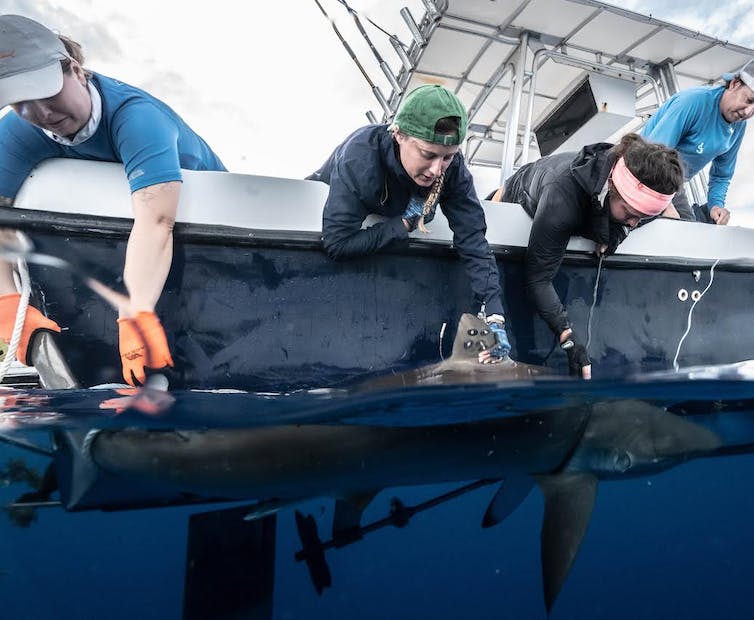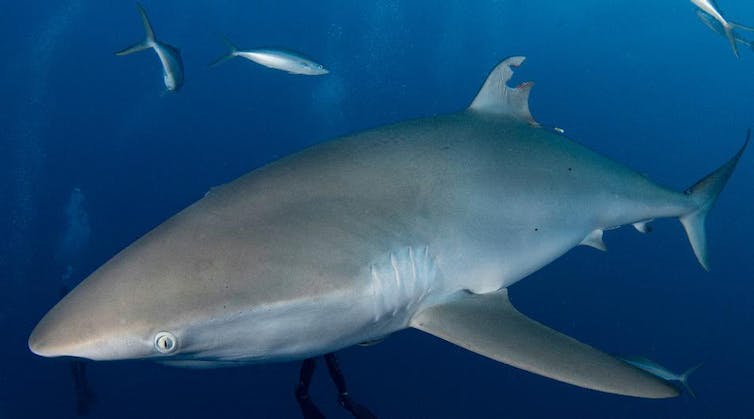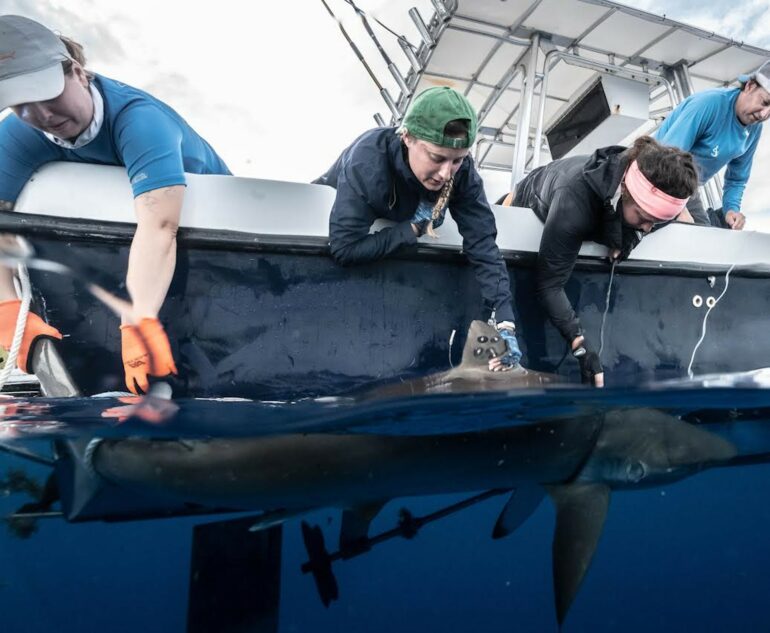I made an accidental and astonishing discovery while studying the movements of sharks off the coast of Jupiter, Florida. I set out to record the migration routes of silky sharks, named for their smooth skin. Instead, in a story filled with twists and turns, I ended up documenting the rare phenomenon of a shark regenerating a dorsal fin.
Tagging, then trauma
It all started in the summer of 2022, when my team and I tagged silky sharks (Carcharhinus falciformis) as part of my Ph.D. research. Silky sharks are commonly found in the open ocean and grow to be 10 feet long. Scientists know these sharks congregate in South Florida each summer, but where they go the rest of the year remains a mystery – one I hoped to solve.

Chelsea Black, center, leads a satellite tagging team from the University of Miami in June 2022.
Tanner Mansell, CC BY-ND
Local boat captain John Moore took us to a site where sharks are known to gather. We carefully caught and gently attached GPS trackers to the dorsal, or top, fin of 10 silky sharks.
The tags, which are attached like large earrings, do not interfere with swimming and are designed to fall off after a few years. When the tag’s antenna breaks the surface of the water, its GPS location is picked up by overhead satellites, hopefully revealing details of the shark’s secret life.
I headed home to track their travels from my laptop.
The story took an unexpected turn a few weeks later, when I received disturbing photos from an avid diver and underwater photographer, Josh Schellenberg, who knew of my work.

The first sighting of the wounded silky shark in July 2022.
Josh Schellenberg, CC BY-ND
The photos showed a male silky shark with a large, gaping wound in its dorsal fin, as if someone had taken a satellite-tag-shaped cookie cutter and punched it right through. Josh wondered if this individual was one of the sharks from my study.
When placing the GPS tags, I also place a second tag beneath each shark’s dorsal fin that displays a unique ID number, so I was able to confirm the injured shark was one from my study, #409834.
I felt a mixture of relief and sadness. Relief that the shark survived this ordeal; sadness for the scientific data that would now go uncollected.
Silky sharks are often caught by local fishermen in this area but are protected in Florida and illegal to kill or retain. Josh’s photos of #409834 showed several hooks in his mouth, so I knew this animal had been captured several times since my team tagged him.
The way the satellite tag attaches means it’s impossible for it to naturally rip out of the fin and leave a wound of this shape. Why someone cut off the shark’s satellite tag remains a mystery, but perhaps they thought they could resell it or possibly wanted to interfere with research. I never expected to see that shark again.
The return of #409834
Flash forward to one year later, the summer…



